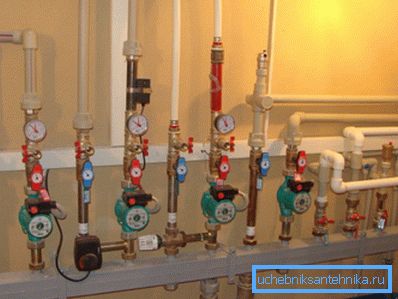Installation of heating in a private house - expert advice
Whatever modern miracle materials you use in the construction of your home, it is impossible to create comfortable living conditions without high-quality heating. Despite the seemingly seemingly complicated process, installing the heating of a private house with their own hands, with a strong desire, is in fact capable of fulfilling practically any good owner.
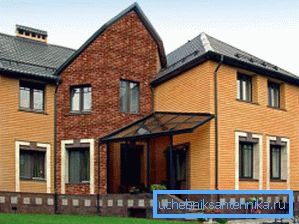
Main heat source
In the sector of heating of housing, especially in that part which concerns private housing construction, the market is replete with an abundance of various offers. Starting from the classic stove stove and ending with such, for the present, exotic as heat pumps and solar collectors. But the performance of some leaves much to be desired, and the price of others is frankly scary.
The reality is that today the most reliable and affordable is the hydraulic heating system. The designs of such systems may differ in details, but the principle itself has remained unchanged since its inception.
The heat carrier, in the overwhelming majority of cases, is water, is heated in the heating boiler and is supplied to the radiators through the pipeline. Giving heat to the radiators, the water returns to the boiler, after which the cycle repeats.
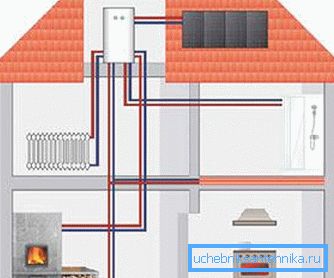
Components of the heating system
As mentioned earlier, there are several options for installing components of a hydraulic heating system, but whatever the layout, the component parts or nodes remain low.
Boiler as the heart of the system
The boiler is actually the main node of the heating system housing. And if a pipe that has become unusable or a leaky radiator will not be difficult to replace on its own, then in the case of a boiler everything is much more serious.
Therefore, it is necessary to approach the choice of this unit responsibly.
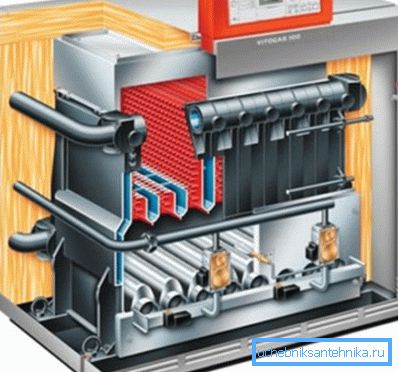
- When choosing a boiler, first of all, it is necessary to build on the cost of the most affordable fuel in the area.. Any specialist will tell you that the most profitable option today is natural main gas. But, unfortunately, it is not everywhere.
- Electrical units firmly occupy the second position of this rating.. But there are also pitfalls here. First of all, it is the price of electricity, such heating is expensive. Plus, additional installation of reinforced electrical wiring is required, it is desirable to install a copper cable with a cross section of at least 6 mm.

- If the gas pipeline is not available, and there are interruptions to electricity, the only reasonable solution remains, install a solid fuel boiler. Modern units of this kind can work on almost any kind of fuel. A special case here can be considered as a fluid system heated from a rustic brick oven.
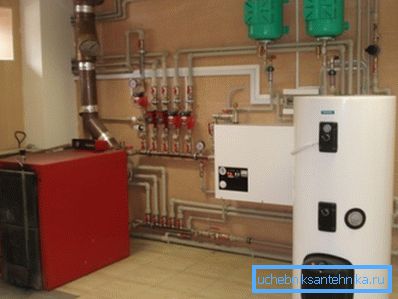
Tip: the installation of boilers running on liquid fuel or liquefied gas is also possible, but compared to the above options, the cost of such heating will be several times more expensive.
Note that the power of the unit is selected depending on the area of the room and region of residence. So for heating 10m? in the southern region of our homeland will need 0.7 - 0.9 kW. In the center already 1.2 - 1.5 kW and in the north about 1.5 - 2 kW.
Then the instruction is simple, you need to divide the housing square by 10 and multiply the result by the number of kilowatts suitable for your region.
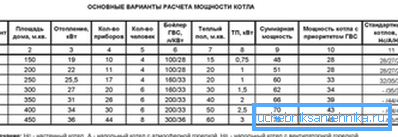
What radiators are better
First, let's look at what radiators exist at all.
Let's start with steel structures.
- Honestly, the only positive quality of such radiators is low price. As you know, steel is susceptible to corrosion, and given the fact that the coolant is water, such structures will not last for a long time. Plus, the repair of heating in a private house often applies to steel radiators or pipes.
- Modern aluminum heating radiators, for private housing, are almost ideal. They are lightweight, reliable and have excellent heat transfer characteristics. One thing is bad, such products are expensive.
- Bimetallic structures were developed to protect against sudden pressure drops in the system, but for standalone systems in private construction this is not relevant.
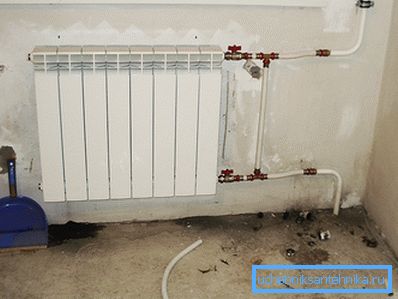
- The quality of classic cast iron products is time tested. They can withstand almost any trouble and if they are not knocked on with a hammer, the metal is fragile, then they will serve for many years. As for the appearance, now pretty specimens are cast.
It is equally important to calculate the number of sections, if you do not go into the jungle of heat engineering, then the number of sections can be calculated as follows. On average for heating 1m? premises required 100W.
In the passport you can find the amount of heat emitted by 1 section. Next, you need to multiply the square of the room by 100 and divide by the heat dissipation rating of the radiator. As a result, we get the number of sections.
Important: in the passport indicates the heat transfer at the temperature of the coolant in the range of 70 - 90? In a private house, such temperatures are not needed, so it is safe to multiply the result by 1.5. The more sections there are, the more economical the boiler will work.
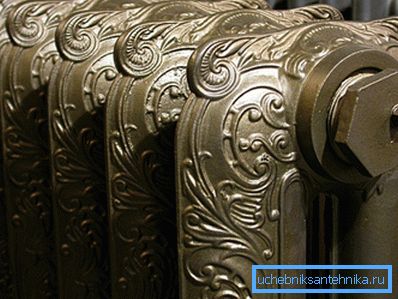
Pipe layout
- Steel pipes can be called a relic of the past. Installation of heating a private house with their own hands, in this case, it is quite problematic to do. Apart from the fact that they are rusting, an exact fit in size, threading will be required, plus there is no way to do without a bulky pipe bender and welding machine.
- Metal-plastic is a good thing and is used quite often, but it is not suitable for every system. Such structures are easily bent, as a result they are not recommended for open wiring. But for the installation of heated floors, they are almost perfect.

- The leader in the modern market is polypropylene. Since it is possible to install heating in a private house with polypropylene pipes, if everyone has a soldering iron, this material is very widespread. The quality of such soldering is considered to be the most reliable.
Polypropylene pipes do not overgrow and do not rust. The system mounted from them will reliably serve many years.

- As for copper, firstly it is very expensive, and secondly, if the system is soldered with tin solder, then after the first season, the soldering will crack and the connections will start to flow. There is a silver solder, but it is expensive, and only a professional can solder it.
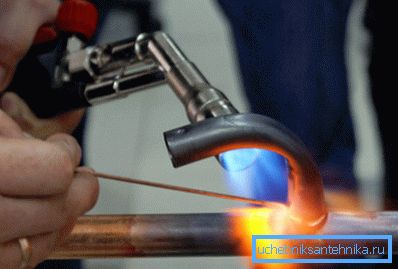
The video shows some points of installation of the heating system.
Conclusion
Summarizing all the above, we conclude that the installation of heating of a private house with your own hands is better to carry out polypropylene pipes using aluminum or cast iron radiators. Plus, it is better to give preference to a system with forced circulation of the coolant.
